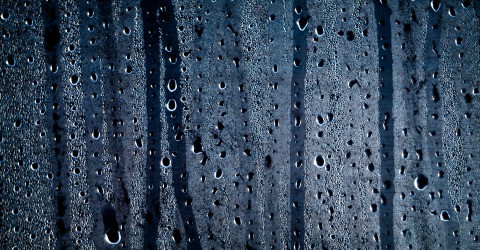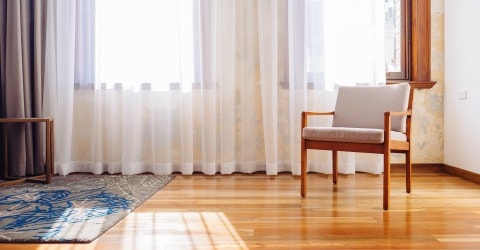Do you want to paint your walls, but you are not sure how to get a professional look? Read these ten interior painting tips from a person who has painted four homes and counting.
My husband and I have renovated four homes since we have been married. One we live in, two we currently rent out and another we once lived in and then sold. I have been responsible for painting the inside of the majority of those homes. When we first started I had no clue what I was doing, but I learned fast and now I do a pretty good job of interior painting if I do say so myself. In fact, I often find myself critiquing the paint jobs of other peoples homes, places of business and even restaurants.
I improved the hard way–by learning from my mistakes–but you don’t have to. Today I am spilling 10 of my best tips for interior home painting that I learned from painting several homes.

10 Interior Painting Tips From A Person Who Has Painted Several Homes
(Links in this post are affiliate links. I will be compensated when you make a purchase by clicking those links. See my disclosure page for more information)
1. Buy The Best Painting Tape You Can Afford
When I painted my first room I used the cheapest painting tape I could find–and I regretted it. Not only did it allow paint to leak through where I didn’t want it, but it also took paint off in areas I did want it as I was taking it off.
After that room, I have always used good quality painter’s tape and have been much happier with the results. I don’t always use the same brand, but I have used both this brand and this one and have been happy with both.
2. If You Are Going To Paint Several Rooms, This Is A Worthwhile Investment
Hardly anyone is tall enough to reach the top of an interior wall without a little help. Investing in a painter’s ladder is worthwhile if you plan to paint several rooms as it has a place to put your paint so you don’t have to go up and down to dip your paintbrush while you are cutting in around the ceiling of the room. Mine is very similar to this one and I have used it to paint the entire interior of four homes now and it is still going strong!

3. Don’t Paint On Extremely Humid Days
Even if you have an air conditioning system, I have learned the hard way that painting on an extremely humid day can affect how your paint sets. It just doesn’t ever seem to set up right–making wood surfaces forever tacky and when applied to walls it will peel over time. You could try using a dehumidifier–I don’t have one so I avoid painting on days when the humidity is supposed to be high.
4. Use Good Quality Paint
Again, being the thrifty person I am, when I first started painting homes I bought cheap paint. What I found was it looked fine when I was done, but it didn’t wear well. When I washed it months later, paint came off on my cleaning rag, even when just using water.
The next time I needed to paint a room I bought mid-range priced paint and was surprised by how much less I needed to coat a room fully. The color also looked more vibrant when I was done, and a few months later when I washed the walls, no paint came off on my rag.
Four homes of painting later and my favorite brand of paint is this one–I even drive 45 minutes out of my way to get it. My husband calls me a paint snob, but I think it is well worth the extra money and the drive to get it.

5. Cut In First With This Type Of Paint Brush
Another frugal painting fail of mine was the brush I first bought to cut in color around the edges of walls before I started rolling the paint on the rest of the walls. I used to buy $1 one-inch paint brushes to cut into a room. They worked okay, but I could never get a perfect line where the wall met the ceiling with them. Then a friend told me I needed a brush like this one. I splurged and gave it a try and it was worth every penny. I find if I take care to clean it thoroughly it will last a whole house-worth of rooms–even longer–whereas the $1 ones only lasted a room or two before they started losing bristles.
6. The Primer You Use Can Make A Huge Difference
Even if your paint says it has primer in it, prime the walls with a separate primer first–trust me you will end up with richer and more vibrant colors on your walls that will be longer lasting.
If you are trying to cover up a vibrant color like red or dark like navy blue, get your primer tinted light grey to help block the original color. This is my favorite brand of primer–I love it so much I buy it in 5-gallon containers.

7. Use Good Lighting
If the lighting in the room you are painting isn’t good, you are going to miss drips, brush strokes and other imperfections in your painting. When I paint at night or in a room without good light, I shine one of these types of lamps in the area I just painted and step back to have a look. It is surprising how many drips I catch doing this that I would have missed otherwise.
8. Keep A Rag Handy
Spills and dots of paint show up where you didn’t want them to happen. I prefer to use a wadded up paper towel to blot off most dots of paint that ended up where they shouldn’t be, like the ceiling, but for more significant spills, having a rag handy is helpful. My husband purchased rags very similar to these for me to use and I find they work well and wash well.

9. Invest In Good Quality Floor Coverings
If you are just painting one room and you don’t see yourself painting again for a long while, go ahead and purchase a roll of butcher paper and use wide masking tape to join one row to the next until your entire floor is covered. However, if you know you are going to be painting several rooms, houses or you plan to paint some furniture as well, then invest in some good drop cloths. I have several of these types and we have used them over and over in each home we have painted either to live in or to rent.
10. Make Sure The Walls Are Sparkling Clean Before You Start
I know this seems like it should be the first tip on the list, but I find whatever I read last in an article tends to be what I remember the most and this tip is crucial to long-lasting, vibrant interior painted walls. If the walls are not that dirty, go ahead and use an all-purpose cleaner to clean them. Make sure you rinse the walls well and let them dry completely before painting.
If the walls are filthy, seem to have a layer of grease on them that won’t come off (common in kitchens) or if you are painting over 1970’s paneling, you are going to have to purchase and use TSP cleaner. This stuff is heavy duty so make sure you follow all the directions for safe cleaning.
One last tip: If you are painting alone, it can get very boring. Make the time fly by a little faster with an audiobook. I use the free app Hoopla that is available through my library, but if your library doesn’t offer something similar, you could sign up for a free trial of Audible.
3 More Posts For Those Who Love To Renovate:
- 10 Ways Thrifty People Save Money On Renovations
- 10 Ways Thrifty People Decorate Their Homes For Less Money
- 10 Ways Thrifty People Save Money On Landscaping
Become A Snail Pacer
Receive a weekly newsletter full of tips for making life changes at a realistic pace.

Leave a Reply